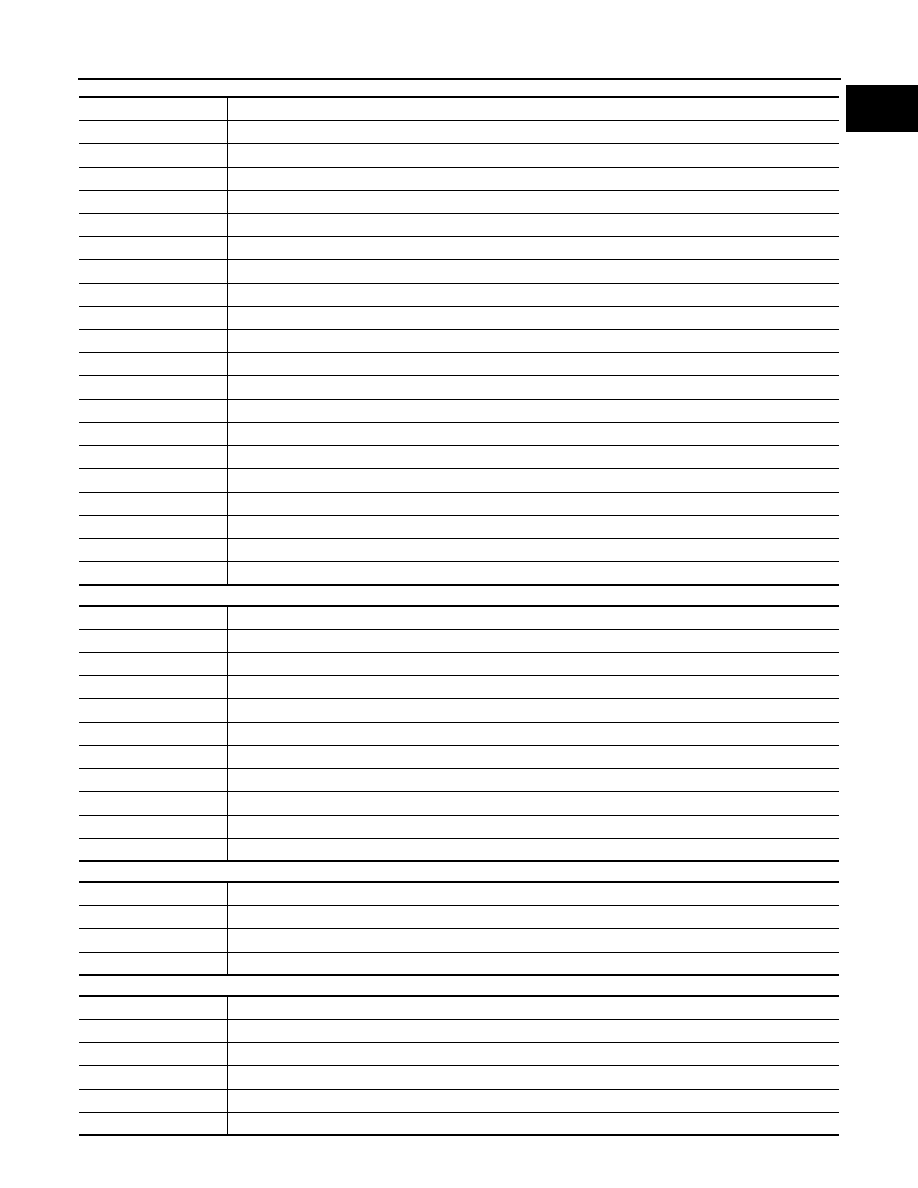Qashqai J11. General information - part 2

ABBREVIATIONS
GI-15
< HOW TO USE THIS MANUAL >
C
D
E
F
G
H
I
J
K
L
M
B
GI
N
O
P
E
F
G
H
ABBREVIATION
DESCRIPTION
E/T
Exhaust temperature
EBD
Electric brake force distribution
EC
Engine control
ECL
Engine coolant level
ECM
Engine control module
ECT
Engine coolant temperature
ECV
Electrical control valve
EEPROM
Electrically erasable programmable read only memory
EFT
Engine fuel temperature
EGR
Exhaust gas recirculation
EGRT
Exhaust gas recirculation temperature
EGT
Exhaust gas temperature
EOP
Engine oil pressure
EP
Exhaust pressure
EPR
Exhaust pressure regulator
EPS
Electronically controlled power steering
ESP
Electronic stability program system
EVAP canister
Evaporative emission canister
EVSE
Electric vehicle supply equipment
EXC
Exhaust control
ABBREVIATION
DESCRIPTION
FC
Fan control
FCW
Forward collision warning
FEB
Forward emergency braking
FIC
Fuel injector control
FP
Fuel pump
FR
Front
FRP
Fuel rail pressure
FRT
Fuel rail temperature
FTP
Fuel tank pressure
FTT
Fuel tank temperature
ABBREVIATION
DESCRIPTION
GND
Ground
GPS
Global positioning system
GST
Generic scan tool
ABBREVIATION
DESCRIPTION
HBMC
Hydraulic body-motion control system
HDD
Hard disk drive
HO2S
Heated oxygen sensor
HOC
Heated oxidation catalyst
HPCM
Hybrid power train control module